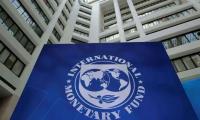Part - II
By Waqar Masood Khan
To avoid political fall-out from a programme that imposed huge adjustment costs, disproportionately affecting the poor, the Egyptian authorities did not allow publication of the staff report and other programme details for nearly three months after its approval in November 2016.
The authorities, however, were unfazed with popular discontent and opposition to the programme. They showed no vacillation in meeting the programme conditionality for three consecutive years. In May 2019, the fifth and final review was completed.
At the conclusion of the staff-level agreement, the mission issued the following statement: “Over the last three years the Egyptian authorities have carried out an ambitious home-grown reform program which has aimed to correct significant external and domestic imbalances, promote inclusive growth and job creation, and strengthen social spending. The authorities’ efforts have been successful in achieving macroeconomic stabilization, a recovery in growth, and an improvement in the business climate.
“GDP growth accelerated from 4.2 percent in 2016/17 to 5.3 percent in 2017/18; unemployment declined from 12 percent to below 9 percent; and the current account deficit narrowed from 5.6 percent of GDP to 2.4 percent. Gross general government debt is expected to decline according to our estimates to about 85 percent of GDP in 2018/19 from 103 percent of GDP in 2016/17. International reserves increased from $17 billion in June 2016 to $44 billion in March 2019. As a result, Egypt has become more resilient to the elevated uncertainty in the external environment.”
Given the programme objectives, these are impressive results. The fundamental orientation of the economy has been transformed. There is a flexible exchange regime and interest rates are more competitive than in the past. The inflation rate was brought down from 33 percent in July 2017 to 13 percent in April 2019. However, the most surprising result is that the interest rate has remained high at 16.75 percent. This means there is a very high real interest rate of close to 4 percent.
It is further stated that the central bank would bring down interest rate to a single digit in the medium term, which is clearly a distant objective not entirely helpful for investment. The success of the flexible exchange rate policy is seen in the build-up of reserves and consequent buffer they represent against external shocks.
The statement further states: “Egypt is on track to achieve its three-year fiscal consolidation objective of 5.5 percent of GDP in the primary balance. The primary surplus target of 2 percent of GDP in 2018/19 is within reach, and the authorities intend to maintain this level in the medium term to keep general government debt on a steadily declining trajectory. The fuel subsidy reform is nearing a successful completion, which will be a significant accomplishment.”
Despite a sizeable discussion on social protection and the schemes implemented for the purpose, the entire subject of poverty is missing from the Fund programme and its review. It is not uncommon in adjustment programmes to stay away from the measurement of poverty, especially the programme’s impact on poverty. While the adjustment must have pushed many in poverty, the improved growth would have a positive effect. Historically, adjustment programmes have led to increased poverty through reduced growth. Many analysts believe that poverty has increased in Egypt under the programme but its extent is not reported in any official document.
Let us look at the differences between the IMF programmes in the two countries. First, the Pakistan programme is tough but not as much as that of Egypt. The reason is simple. Egypt’s imbalances were deep rooted and the last IMF programme was done in the mid-nineties. Second, the adjustments directly affecting the poor in Pakistan are somewhat limited compared to those in Egypt. The food and fuel subsidies in Egypt, directly affecting the poor, were as high as five percent of GDP compared to a much smaller figure for Pakistan. In fact unlike in Egypt, in Pakistan, the poor consumers of gas and electricity are provided subsidies through cross-subsidization as opposed to any budgetary allocations, while food subsidies are negligible.
Third, in Egypt spending was way out of line with tax revenues. In Pakistan, lately, it is revenue collection that has become more problematic. The tax collection target set for the first year at Rs5,550 billion, against a collection of Rs3,800 billion last year, means an additional revenue of Rs1,750 billion or nearly four percent of GDP, which is too steep. Fourth, regarding the monetary and exchange rate adjustment policies, as we have already pointed out in Part-I, those were more onerous for Egypt than for Pakistan.
The Pakistani programme, in our view, is more implementable than the Egyptian programme. It is not notably different than its predecessors. However, there is one important difference between the two countries, which will play a significant role in determining the success of the programme. This is the vast difference in the level of political freedoms and state of human rights.
State authority in Egypt, including legislative and coercive power, effectively vests in the president who was not elected under a free and fair election like the one held in 2011. For this reason, dissent against the programme was brutally suppressed and draconian laws were enacted to right-size the pay and terms and conditions of civil servants as well as to curtail the space of civil society organizations to freely express dissent and mobilize public opinion. Imposition of VAT was also made possible through such a law.
Evidently, Pakistan is witnessing a great deal of discontent and opposition to its new programme. But here the government is not in a position to use coercive methods to deal with this situation. Political dialogue, engagement and persuasion with the affected groups managed is required. The tax agenda adopted by the government has opened up a very large number of fronts, giving rise to unified opposition by business and commerce.
The team leading the effort did not have the benefit of negotiating the adopted measures. Precious time is being wasted during strikes and lock-downs with big economic losses. It is imperative that for each measure, even when it was agreed with the Fund, the government should deal with it on its merits, revenue potential and inconvenience faced by the prospective taxpayers. An early resolution of this impasse along above lines is the only way forward.
Concluded
The writer is a former finance secretary. Email: waqarmkn@gmail.com
Representational image. — APP FileOnce again there is debate surrounding the National Finance Commission Award,...
Pakistani human rights activist and Supreme Court lawyer Asma Jahangir died on February 11, 2018. — AFPAn annual...
Representational image. — APP FileThe meltdown of Pakistan’s economy needs immediate attention. Political unrest...
A health worker administers polio vaccine drops to a child during a door-to-door polio vaccination campaign in Lahore,...
Armed militants of the banned Tehreek-e-Taliban Pakistan pose for a photograph in Orakzai Agency. —...
An aeroplane of the national flag carrier of Pakistan is seen in this file photo. — AFPWhile Pakistan considers...







